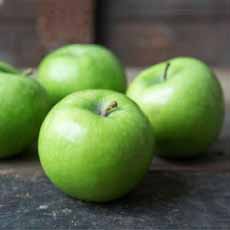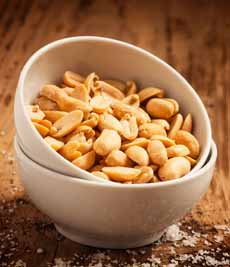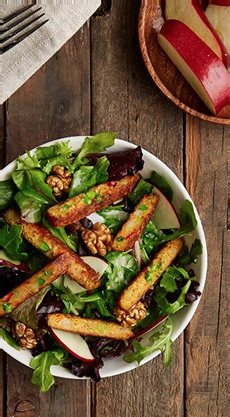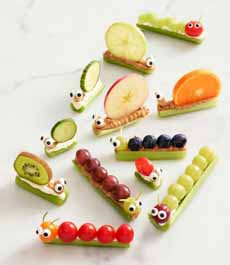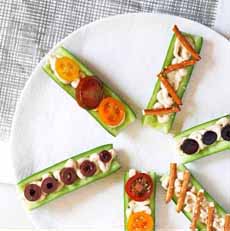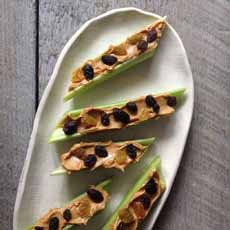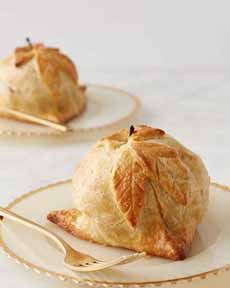
[1] A classic apple dumpling, decorated with pastry scraps to look like an apple. Here’s the recipe from Martha Stewart.
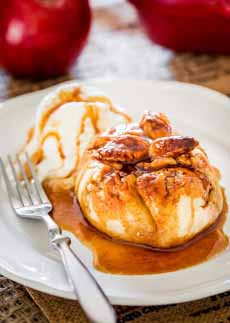
[2] Add some ice cream, pan sauce or caramel sauce, and maybe some toasted pecans. Here’s the recipe from Jo Cooks).

[3] Apple dumplings as rugelach. Rugelach was rolled with a filling, but not apple. This version uses refrigerated crescent dough. Here’s the recipe from Cincy Shopper.
|
|
Say the word “dumpling” and most people we know would think of Chinese and Japanese dumplings, two bites of pork, shrimp or vegetable stuffing in a noodle casing, fried or steamed.
But before the rise* of Asian restaurants in the U.S., most Americans thought of a dumpling as a sweet pastry wrapped around sliced apples or other fruit (photos #1 and #2).
September 17th, National Apple Dumpling Day, celebrates that pastry, a different form for the ingredients of apple pie. If you’re in the mood, we have a recipe below.
These delicious filled pastries are made by putting cored and peeled apples on a piece of dough, along with butter, cinnamon, lemon zest and sugar. Sometimes raisins or dried cranberries are added.
Some people bake the whole cored apple, creating a round shape.
Some use half an apple, creating a domed shape.
Others prefer diced apples, which are easier to spoon up and eat.
More recently, bakers have been playing with other shapes: horns (photo #3), pyramids, squares and even crescents, like Japanese gyoza.
The dough is then folded over the filling, and dumplings are popped into the oven.
What’s the difference between an apple dumpling and an apple turnover, you may ask? Largely, the shape:
Apple dumplings are round or dome-shape and filled with whole or halved apples.
Turnovers are typically triangles filled with diced apples.
APPLE DUMPLING HISTORY
The word dumpling is first found in England around 1600, in the Norfolk dialect. It possibly derived from the Low German word for lump, dump. It described a small, usually globular, piece of boiled or steamed dough. Initially, dumplings were savory, filled with meat [source].
But the first dumplings—bite-size packets of filling wrapped in dough—are thought to have originated in the Eastern Han Dynasty of China, some 1,800 years ago.
They were a way to serve meat in smaller, cheaper amounts. The first dumplings were thought to be filled with mutton, chilis and herbs, followed by other meats and seafood.
Much later, in Europe, a dumpling was a ball of dough cooked and served in soup or stew.
In Northern Europe, the dough was usually made with suet†, and was boiled, as in today’s Chicken And Dumplings. These pastries were also fried or baked.
Other regions used other ingredients: potatoes (like Italian gnocchi, matzoh meal (Jewish matzoh balls) and flour dumplings that were often filled (Jewish kreplach, Polish pierogis, Russian pelmeni and numerous others).
Dumplings likely emerged as a food of the poor: a cheaper way to satisfy hunger alongside a small piece of meat. The concept evolved into pastries filled with ground meat.
Later, the word was ported to describe larger pastry dumplings filled with fruit, which became popular in Northern Europe. Apples, pears, plums and other fruits found their way into these sweet dumplings.
Fruit dumplings were popularized in the U.S. by the Pennsylvania Dutch, who immigrated from Germany (Dutch is an American mis-spelling of their nationality, Deutsche).
|



